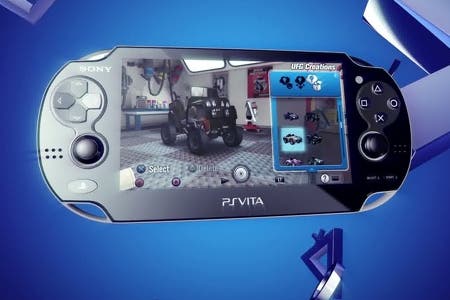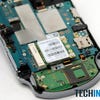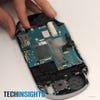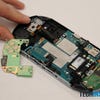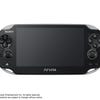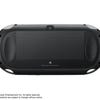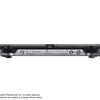Is the PlayStation Vita worth £230?
Sony's handheld ripped to pieces and costed up.
What a difference six months makes. In June last year Sony boss Kaz Hirai proudly took to the stage at E3 to announce that the Vita would retail for $250 (or $299 for the 3G version) - a figure that was generally greeted with enthusiasm by both press and gamers alike. Meanwhile, the considerably less powerful 3DS was floundering at around the same price, just a few months after its launch.
Fast forward to January 2012 and the 3DS is flying off shelves following an unprecedented pricing rethink while the Vita has got off to a miserable start in Japan, with numerous internet commentators already starting their 'cut the price' catcalls.
So, one month ahead of the machine's global launch, we've enlisted the help of technical intelligence experts UBM TechInsights and taken a screwdriver to Sony's new portable in an attempt to divine two things - whether you're getting good value for money, and whether Sony has left itself any room for an emergency price drop should the Western launch belly-flop.
UBM's VP of business intelligence, Jeffrey Brown, tells us that the total bill of materials for the 3G-enabled version of the system comes in at an estimated $159.10 - that's around £102.90. That figure breaks down as follows:
- Display and touchscreens: $50
- Battery: $3.60
- Cameras: $3.50
- Wi-Fi/BT/GPS: $3.50
- NAND: $6.00
- SDRAM: $9.25
- Processor: $16.00
- BB+XCR: $16.25
- Non-electronic: $11.00
- Other: $30.00
- Supporting materials: $10.00
For more on UBM's findings, head on over to its official site.
As a point of reference, the equivalent raw material cost of the 3DS at launch was an estimated $101 per unit (around £61.76).
To work out exactly how much Sony is taking home on every system sold, we need to know the trade price that it's asking from retailers. Alas, a source within UK retail tells us that a figure has not actually been set yet by the platform holder. They speculate that this is a move by Sony to prevent the aggressive discounting that took place in the run up to the 3DS launch. If a retailer doesn't know how much it's going to have to pay for the device, it's going to err on the side of caution until it does and offer it at Sony's RRP.
Similarly, the source tells us Sony is holding back on confirming allocations for individual retailers too. Again, if a retailer doesn't know how many consoles it's going to get, it'd be foolish to discount the price if it's not going to be able to cover its customer orders.
That said, we can make an educated guess at the trade price. Tradition dictates that the margin offered to retailers on hardware is between five and 7.5 per cent before VAT has been added. If we conservatively assume it's six per cent, then the trade price for the 3G model is around £210 (given VAT of £56) and the non-3G model around £173 (given VAT of £46).
(UPDATE: Our retail source has since come back to us with Sony's official trade price - the standard model costs vendors £179.05, while the 3G model is £217.97. We've amended the figures below to reflect that.)
That means that Sony is earning around £115 on every 3G Vita sold in the UK, give or take currency conversion factors.
Of course, that's by no means pure profit. Very substantial labour, R&D, marketing and distribution costs all need to be taken into account too. Without a sneak peak at Sony's books, it's virtually impossible to ascertain exactly what proportion of the take-home is profit. However, it's worth noting that Nintendo earned about £108 on every 3DS sold at its launch price. And as we've learned since, it managed to find ample elbow room for a price cut on that margin.
Will Sony need to follow its rival's lead? It's far too early to tell, though the word from games industry commentators suggests it's unlikely to happen, no matter how the Vita performs when it launches on Western shores next month.
"I think that the Vita is a great value for the money, but it is launching at an inopportune time," Wedbush Morgan analyst Michael Pachter tells Eurogamer.
"The number of people looking for a dedicated gaming device is shrinking, and the media cards are insufficient to allow a lot of multimedia downloads.
"The price is great for what you get, but the fact is that the Vita is priced the same as the PS3. As a practical matter, someone without a PS3 would probably be happier if they bought a console first, and someone with a PS3 might look hard at the Xbox 360 at a similar price before a Vita.
"If a consumer already has a PS3, they won't really feel compelled to buy a Vita to play Uncharted, for example, but they might want to play Gears of War or Halo. Thus, although a good value, I think Vita is a tough sell. It would have been great in 2004-2006."
Pachter added that he sees the addressable market of PlayStation 3 owners looking for an additional portable console experience as around 10 million over the Vita's first couple of years.
He notes that "price drops will cause demand to rise," but suggests Sony is unlikely to go down that path.
"They likely don't have much room for a price cut at a profit, so my best guess is that they will stick with the introductory price for the wi-fi model at least for a year, and will reduce price only when the cost to build drops.
"I don't think they are going to make a very big business out of Vita, so it would be silly to chase a small market by incurring losses on each unit sold."
Screen Digest's Piers Harding-Rolls echoed Pachter's judgement in our recent Trends of 2012 feature.
"I expect Vita to get away relatively strongly at launch because of its strong content line-up but, like the 3DS, may suffer due to pricing after the initial rush has subsided. I expect Sony to be reluctant to make any significant pricing move, outside of value bundles, until at least 2013."
Only time will tell whether Sony can indeed find a significant audience for its new device. As is generally the case, its fate most likely rests not on the price of the hardware itself but on the quality of its games - not to mention how they're priced, though that's a different discussion for a different day.
As our recent Vita review explains, it's a machine with stacks of potential. In terms of its feature set, Sony has got nearly everything right - bar those awkward proprietary memory cards - and, as such, few should balk at the price tag.
Here's hoping there's enough people out there that can stomach the RRP and give third party developers suitable impetus to help Sony see its ambitious vision through. The gaming landscape will surely be healthier for it.
